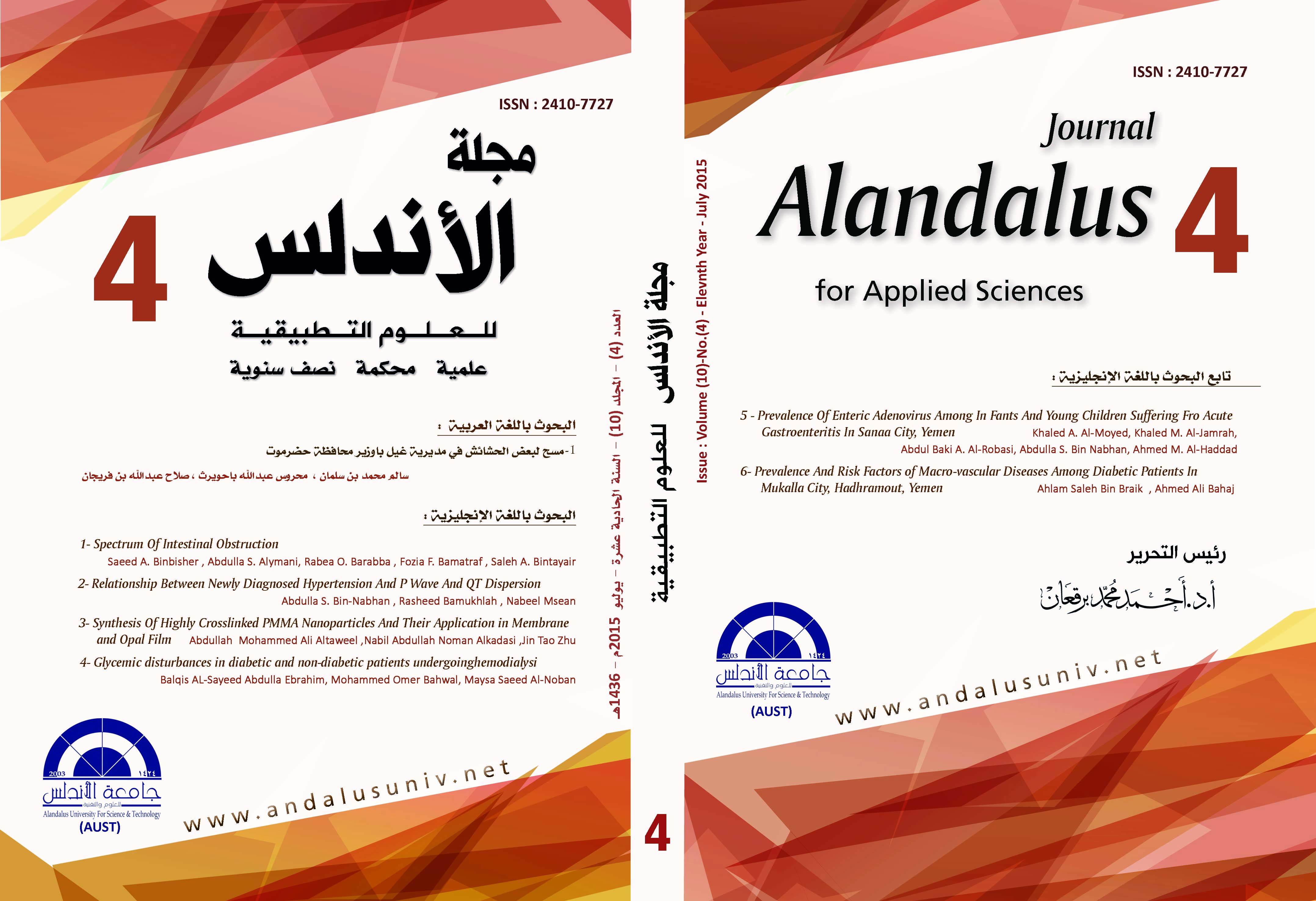العلاقة ما بينً المرضى حديثي التشخيصً بضغط الدم و التشتت في الموجه (ب) و ( ك ت) في ثخطيط القلب ً القلب Abdulla S. Bin-Nabhan, Rasheed Bamukhlal, Nabeel Msean
محتوى المقالة الرئيسي
الملخص
between 1st of July and 30 September 2013, were all cases came to clinic with the age between 30 and 50 years who are willing to participate, we measure there blood pressure (BP) and 12-leads ECG were done for them .
There were 492 subjects recruited for this study 242 were newly diagnosed hypertensive's and another 250 were normal subjects.
Then P wave and QT dispersion compared in the two groups.
Results and conclusion: P dispersion was significantly more prolonged in newly diagnosed hypertensive group.
QT dispersion was more prolonged in newly diagnosed hypertensive group but not statistically significant.Non treated hypertensive individual had found from the standard ECG that maximum duration of the P wave and its dispersion were more prolonged in the patient with atrial fibrillation.
Prolonged QT duration in hypertensive patient has relation with ventricular arrhythmia, and atrial fibrillation (AF) is the direct cause for P wave desperation (PwD)) but our study will deal with the relation of newly diagnosed hypertension and these ECG findings.
Objectives: To compare the prevalence of P wave and QT dispersion in both newly diagnosed hypertensive and control groups.
Method: This was a cross-sectional observation study in private clinic at Almukalla –Alsalam zoon, at the period
